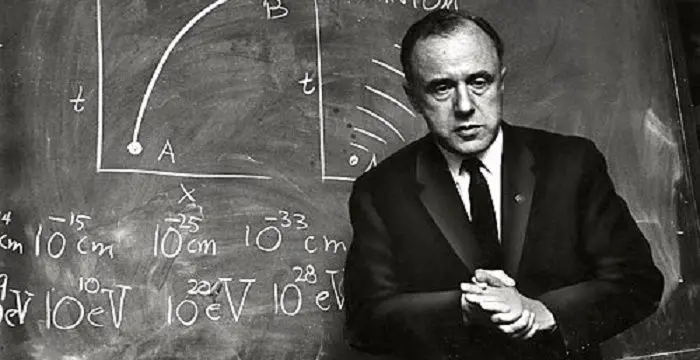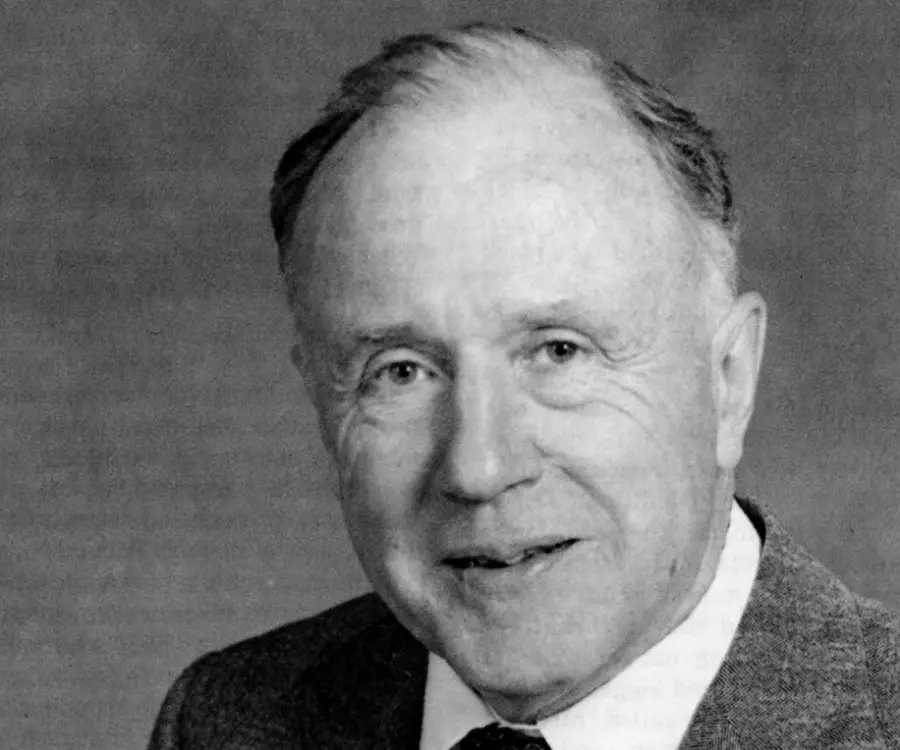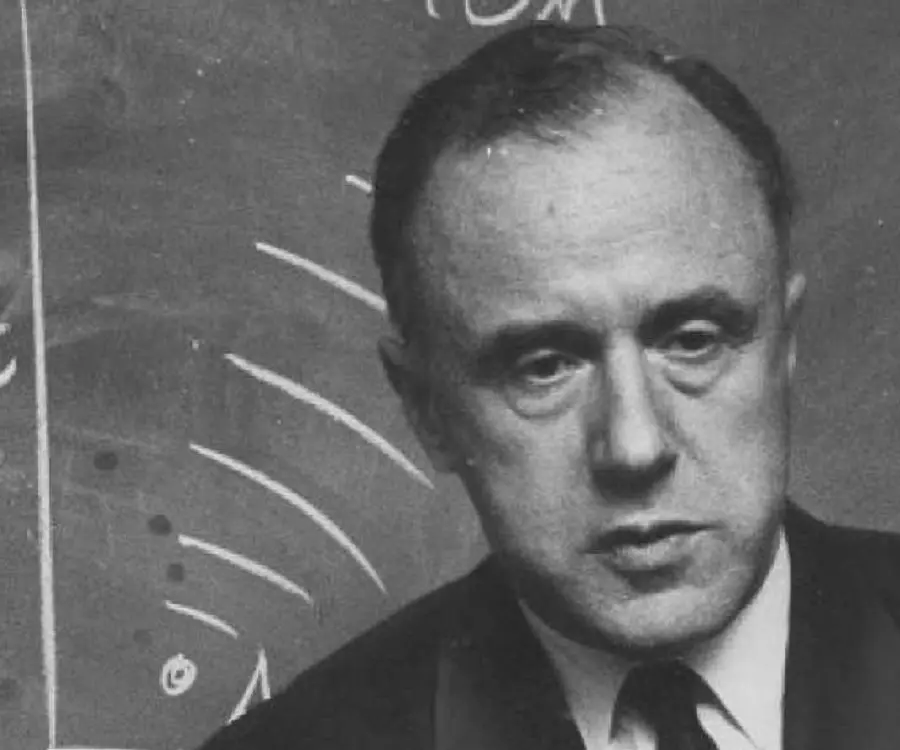
John Archibald Wheeler - Physicists, Timeline and Family
John Archibald Wheeler's Personal Details
John Archibald Wheeler is a famous American scientist who explained nuclear fission and fusion reactions and coined the term ‘Black Hole’
| Information | Detail |
|---|---|
| Birthday | July 9, 1911 |
| Died on | April 13, 2008 |
| Nationality | American |
| Famous | Scientists, Physicists |
| City/State | Florida |
| Spouses | Janette Hegner |
| Known as | John A. Wheeler, John Wheeler, Johnny |
| Childrens | Alison Wheeler Lahnston, James English Wheeler, Letitia Wheeler Ufford |
| Universities |
|
| Birth Place | Jacksonville |
| Gender | Male |
| Sun Sign | Cancer |
| Born in | Jacksonville |
| Famous as | Physicist |
| Died at Age | 96 |
// Famous Scientists
Juliane Koepcke
Juliane Koepcke is a German-Peruvian biologist, who was the lone survivor among the 92 passengers and crew of the ill-fated LANSA Flight 508 that crashed in the Peruvian rainforest on 24 December 1971. Know more about her life in this biography.
Henry Cavendish
Henry Cavendish was a theoretical chemist and physicist, renowned for discovery of hydrogen and calculation of the mass of earth. To know more about his childhood, profile, timeline and career read on
Konstantin Tsiolkovsky
Konstantin Tsiolkovsky was a Russian rocket scientist and a pioneer of astronautics. This biography provides detailed information about his childhood, family, personal life, career, achievements, etc.
John Archibald Wheeler's photo
Who is John Archibald Wheeler?
John Archibald Wheeler was a renowned theoretical physicist from America who explained the concept of nuclear fission and fusion. He was instrumental in development of the first atom bomb during World War II and later was involved in the making of the hydrogen bomb. After completing his schooling this scientific genius, associated with the likes of Niels Bohr and Gregory Breit and with the latter he put forth the ‘Breit-Wheeler process’ to convert light into matter. He then began his four decade long association with the Princeton University. It was at Princeton that he developed the concept of S-matrix, which holds good even today. Owing to his expertise in the process of nuclear fission he was inducted into Project Manhattan during WWII. He made significant contribution in the development of nuclear reactor as well as in the purification of Plutonium. After the WWII he resumed his academic responsibilities and was involved in various other research work that included theoretical physics. He spearheaded the revival of theoretical physics and studied the time-space continuum and strived to establish a geometrical basis for phenomenon like gravity. His efforts led to the inception of ‘Geometrodynamics’ and he even studied wormholes and black holes. In fact he was the one to coin the term black hole. Read on to know more about his life and works
// Famous Physicists
Henry Cavendish
Henry Cavendish was a theoretical chemist and physicist, renowned for discovery of hydrogen and calculation of the mass of earth. To know more about his childhood, profile, timeline and career read on
Walter Kohn
Nobel Laureate Walter Kohn was an Austrian-born American theoretical chemist and physicist. Check out this biography to know about his childhood, life, achievements, works & timeline.
Nikola Tesla
Nikola Tesla was a Serbian-American inventor, best known for his development of alternating current electrical systems. This biography of Nikola Tesla provides detailed information about his childhood, life, achievements, works & timeline.
Childhood & Early Life
On July 9, 1911, John Archibald Wheeler was born to Joseph Lewis Wheeler and Mabel Archibald Wheeler in the city of Jacksonville, Florida, United States.
Both his parents worked as librarians and he had three younger siblings Joseph, Robert and Mary.
Wheeler attended a local school in Vermont where the family resided during 1921-22 and later studied at the ‘Rayen High School’ in Ohio. He then attended the ‘Baltimore City College’ from where he graduated in 1926.
He received a scholarship to the ‘John Hopkins University’ sponsored by the state of Maryland. While working at the ‘National Bureau of Standards’ during the summer of 1930, he released his first scientific paper.
Under the tutelage of physicist Karl Herzfeld he worked on his thesis for the doctoral studies and was awarded a Ph. D. in 1933. His thesis dealt with dispersion and absorption of the inert gas Helium.
Career
During 1934-35, he worked in collaboration with physicists Gregory Breit and Niels Bohr. It was in 1934 that Wheeler in collaboration with Breit discovered the mechanism by which light can be converted to matter. The process was named after its founders as the ‘Breit-Wheeler Process’ and marked the beginning of the latter’s scientific career.
He then embarked on his first teaching assignment at the ‘University of North Carolina at Chapel Hill’, a public research university. As an assistant professor he was offered an annual salary of $2300.
Owing to his interest in particle physics, in the year 1938 he accepted the position of an associate professorship at the ‘Princeton University’. The same year he collaborated with theoretical physicist Edward Teller to investigate the liquid drop model of atomic nucleus.
In 1939, following the discovery of nuclear fission Archibald collaborated with Niels Bohr and the duo set about examining the phenomenon of fission in Uranium, in order to elucidate the process. They concluded that it was the unstable isotopes of fissionable materials that released the energy upon being bombarded by neutrons.
Wheeler was inducted into the ‘Manhattan Project’ in 1942 and he was a part of the ‘Metallurgical Laboratory’ that was in charge of developing the nuclear reactor. The findings of the research he undertook, with Robert F. Christy another theoretical physicist, were published in a paper ‘Chain Reaction of Pure Fissionable Materials in Solution’.
He was then incorporated into the design department of ‘DuPont’, the chemical manufacture company, which was in charge of constructing the nuclear reactor as well a facility for purification of Plutonium.
During 1943-44, he worked in close association with the engineers and even had to relocate a few times. He even pointed out a technical snag in the design of the reactor, which caused it to shut down.
In 1945, he recommenced teaching at Princeton and he embarked on research of elementary particles in particular the ‘muon’ and in association with Brazilian physicist Jayme Tiomno, explored the decay of radioactive substances and dubbed their findings as the ‘Tiomno Triangle’.
He was then appointed as the director of ‘Cosmic Rays Laboratory’ established in Princeton in 1948.
Wheeler was then engaged at the ‘Los Alamos Laboratory’ which undertook the assignment to develop the Hydrogen Bomb. It was in 1951 that he established a division of the ‘Los Alamos Labs’ at Princeton through which he engaged students in projects involving nuclear weapons and nuclear energy as an alternative.
Wheeler’s efforts bore fruits in 1953, when the ‘Matterhorn B’, a wing of ‘Project Matterhorn’ initiated by him in Princeton, successfully detonated the first thermonuclear device powered by nuclear fusion.
Continuing his academic profession at Princeton, this eminent theoretical physicist began to study electromagnetism and gravitational force. He coined the term ‘geon’ to describe a wave, be it gravitational or electromagnetic in nature, that is confined in the field propagated by its own force of attraction.
He was also instrumental in reviving the branch of physics that dealt with Einstien’s general relativity. He described the passages in the space-time continuum as mentioned in Einstien’s theory as ‘wormholes’ and inferred by further investigation that they are unstable.
He pioneered ‘Geometrodynamics’, which strives to analyze the geometrical basis of all space-time phenomena, with its ultimate goal being the establishment of a unified field theory.
From 1962-73, he published many books which accounted the details of his research. ‘Geometrodynamics’, ‘Spacetime Physics’, ‘Scouting Black Holes’ and ‘Gravitation’ are some of the works he penned during this time.
In 1967, he coined the term ‘black holes’ to explain the phenomenon of gravitational collapse.
After a career spanning nearly four decades in Princeton, he retired in 1976.
From 1976-1986, he remained at the ‘Center for Theoretical Physics’ affiliated to the ‘University of Texas’. During his tenure he was involved with experiments that dealt with quantum physics.
Major Works
John Archibald was renowned for making numerous contributions to the field of science but his work in the field of nuclear fission and fusion reaction is of paramount significance. He was involved in the making of first ever atom bomb and later the Hydrogen bomb.
Awards & Achievements
Throughout his career John was lauded with several honours and awards which include the ‘Albert Einstien Award’, ‘Enrico Fermi Award’ and ‘Franklin Medal’.
In 1970 he was presented with the ‘National Medal of Science’ by the President of United States.
In 2003, he was awarded the ‘Einstein Prize’ by the ‘American Physical Society’ for his contribution in the field of gravitational physics.
Personal Life & Legacy
Wheeler got married to Janette Hegner on June 10, 1935 after courting her for two years. Janette was a student of history at the ‘John Hopkins University’ and later took up teaching position at ‘Rye Country Day School’. The couple have three children.
This eminent scientist breathed his last on April 13, 2008 in New Jersey, six months after his wife’s demise. He was suffering from pneumonia and was aged 96 at the time of his death.
// Famous Cancer Celebrities peoples
Jacob Elordi
Jacob Elordi is an Australian actor. Let’s take a look at his childhood, family, personal life, career, etc.
Riele Downs
Riele Downs is a Canadian-American actress & Musical.ly star. Let’s take a look at her family and personal life including age, birthday, net worth, boyfriends and fun facts.
Yammy Xox
Check out all that you wanted to know about Yammy Xox, the famous British YouTube Personality; her birthday, her family and personal life, her boyfriends, fun trivia facts and more.
John Archibald Wheeler's awards
| Year | Name | Award |
|---|---|---|
Other | ||
| 1968 | Enrico Fermi Award | |
| 1965 | Albert Einstein Award | |
| 0 | Matteucci Medal | |
| 0 | Franklin Medal | |
| 1946 | Guggenheim Fellowship for Natural Sciences | |
| 0 | US & Canada | |
| 1971 | National Medal of Science for Physical Science | |
| 0 | Oersted Medal | |
| 0 | 1997 - Wolf Prize in Physics | |
| 0 | 1988 - Albert Einstein Medal | |
John Archibald Wheeler biography timelines
- // 9th Jul 1911On July 9, 1911, John Archibald Wheeler was born to Joseph Lewis Wheeler and Mabel Archibald Wheeler in the city of Jacksonville, Florida, United States.
- // 1921 To 1926Wheeler attended a local school in Vermont where the family resided during 1921-22 and later studied at the ‘Rayen High School’ in Ohio. He then attended the ‘Baltimore City College’ from where he graduated in 1926.
- // 1930He received a scholarship to the ‘John Hopkins University’ sponsored by the state of Maryland. While working at the ‘National Bureau of Standards’ during the summer of 1930, he released his first scientific paper.
- // 1933Under the tutelage of physicist Karl Herzfeld he worked on his thesis for the doctoral studies and was awarded a Ph. D. in 1933. His thesis dealt with dispersion and absorption of the inert gas Helium.
- // 1934During 1934-35, he worked in collaboration with physicists Gregory Breit and Niels Bohr. It was in 1934 that Wheeler in collaboration with Breit discovered the mechanism by which light can be converted to matter. The process was named after its founders as the ‘Breit-Wheeler Process’ and marked the beginning of the latter’s scientific career.
- // 10th Jun 1935Wheeler got married to Janette Hegner on June 10, 1935 after courting her for two years. Janette was a student of history at the ‘John Hopkins University’ and later took up teaching position at ‘Rye Country Day School’. The couple have three children.
- // 1938Owing to his interest in particle physics, in the year 1938 he accepted the position of an associate professorship at the ‘Princeton University’. The same year he collaborated with theoretical physicist Edward Teller to investigate the liquid drop model of atomic nucleus.
- // 1939In 1939, following the discovery of nuclear fission Archibald collaborated with Niels Bohr and the duo set about examining the phenomenon of fission in Uranium, in order to elucidate the process. They concluded that it was the unstable isotopes of fissionable materials that released the energy upon being bombarded by neutrons.
- // 1942Wheeler was inducted into the ‘Manhattan Project’ in 1942 and he was a part of the ‘Metallurgical Laboratory’ that was in charge of developing the nuclear reactor. The findings of the research he undertook, with Robert F. Christy another theoretical physicist, were published in a paper ‘Chain Reaction of Pure Fissionable Materials in Solution’.
- // 1943 To 1944During 1943-44, he worked in close association with the engineers and even had to relocate a few times. He even pointed out a technical snag in the design of the reactor, which caused it to shut down.
- // 1945In 1945, he recommenced teaching at Princeton and he embarked on research of elementary particles in particular the ‘muon’ and in association with Brazilian physicist Jayme Tiomno, explored the decay of radioactive substances and dubbed their findings as the ‘Tiomno Triangle’.
- // 1948He was then appointed as the director of ‘Cosmic Rays Laboratory’ established in Princeton in 1948.
- // 1951Wheeler was then engaged at the ‘Los Alamos Laboratory’ which undertook the assignment to develop the Hydrogen Bomb. It was in 1951 that he established a division of the ‘Los Alamos Labs’ at Princeton through which he engaged students in projects involving nuclear weapons and nuclear energy as an alternative.
- // 1953Wheeler’s efforts bore fruits in 1953, when the ‘Matterhorn B’, a wing of ‘Project Matterhorn’ initiated by him in Princeton, successfully detonated the first thermonuclear device powered by nuclear fusion.
- // 1962 To 1973From 1962-73, he published many books which accounted the details of his research. ‘Geometrodynamics’, ‘Spacetime Physics’, ‘Scouting Black Holes’ and ‘Gravitation’ are some of the works he penned during this time.
- // 1967In 1967, he coined the term ‘black holes’ to explain the phenomenon of gravitational collapse.
- // 1970In 1970 he was presented with the ‘National Medal of Science’ by the President of United States.
- // 1976After a career spanning nearly four decades in Princeton, he retired in 1976.
- // 1976 To 1986From 1976-1986, he remained at the ‘Center for Theoretical Physics’ affiliated to the ‘University of Texas’. During his tenure he was involved with experiments that dealt with quantum physics.
- // 2003In 2003, he was awarded the ‘Einstein Prize’ by the ‘American Physical Society’ for his contribution in the field of gravitational physics.
- // 13th Apr 2008This eminent scientist breathed his last on April 13, 2008 in New Jersey, six months after his wife’s demise. He was suffering from pneumonia and was aged 96 at the time of his death.
// Famous American peoples
Wentworth Miller
Wentworth Miller is an American actor and screenwriter who achieved recognition for his role in the TV series ‘Prison Break’.
Jason Simpson
Jason Simpson is the son of former NFL running back, broadcaster and actor O. J. Simpson. Check out this biography to know about his childhood, family, life, and little known facts about him.
Melissa Brim
Melissa Brim is the ex-girlfriend of former professional boxer Floyd Mayweather Jr. Check out this biography to know about her birthday, childhood, family life, achievements and fun facts about her.
Skai Jackson
Skai Jackson is an American child actress with huge fan following. Find more about her family & personal life, relationships, facts and more.
Joyce Meyer
Joyce Meyer is a Christian author and speaker. This biography provides detailed information about her childhood, life, achievements, works & timeline
Zoe LaVerne
Zoe LaVerne is an American musical.ly star. Check out this biography to know more about her family, personal life, including her age, birthday, etc.
John Archibald Wheeler's FAQ
What is John Archibald Wheeler birthday?
John Archibald Wheeler was born at 1911-07-09
When was John Archibald Wheeler died?
John Archibald Wheeler was died at 2008-04-13
Where was John Archibald Wheeler died?
John Archibald Wheeler was died in Hightstown
Which age was John Archibald Wheeler died?
John Archibald Wheeler was died at age 96
Where is John Archibald Wheeler's birth place?
John Archibald Wheeler was born in Jacksonville
What is John Archibald Wheeler nationalities?
John Archibald Wheeler's nationalities is American
Who is John Archibald Wheeler spouses?
John Archibald Wheeler's spouses is Janette Hegner
Who is John Archibald Wheeler childrens?
John Archibald Wheeler's childrens is Alison Wheeler Lahnston, James English Wheeler, Letitia Wheeler Ufford
What was John Archibald Wheeler universities?
John Archibald Wheeler studied at 1933 - Johns Hopkins University, 1926 - Baltimore City College
What is John Archibald Wheeler's sun sign?
John Archibald Wheeler is Cancer
How famous is John Archibald Wheeler?
John Archibald Wheeler is famouse as Physicist















